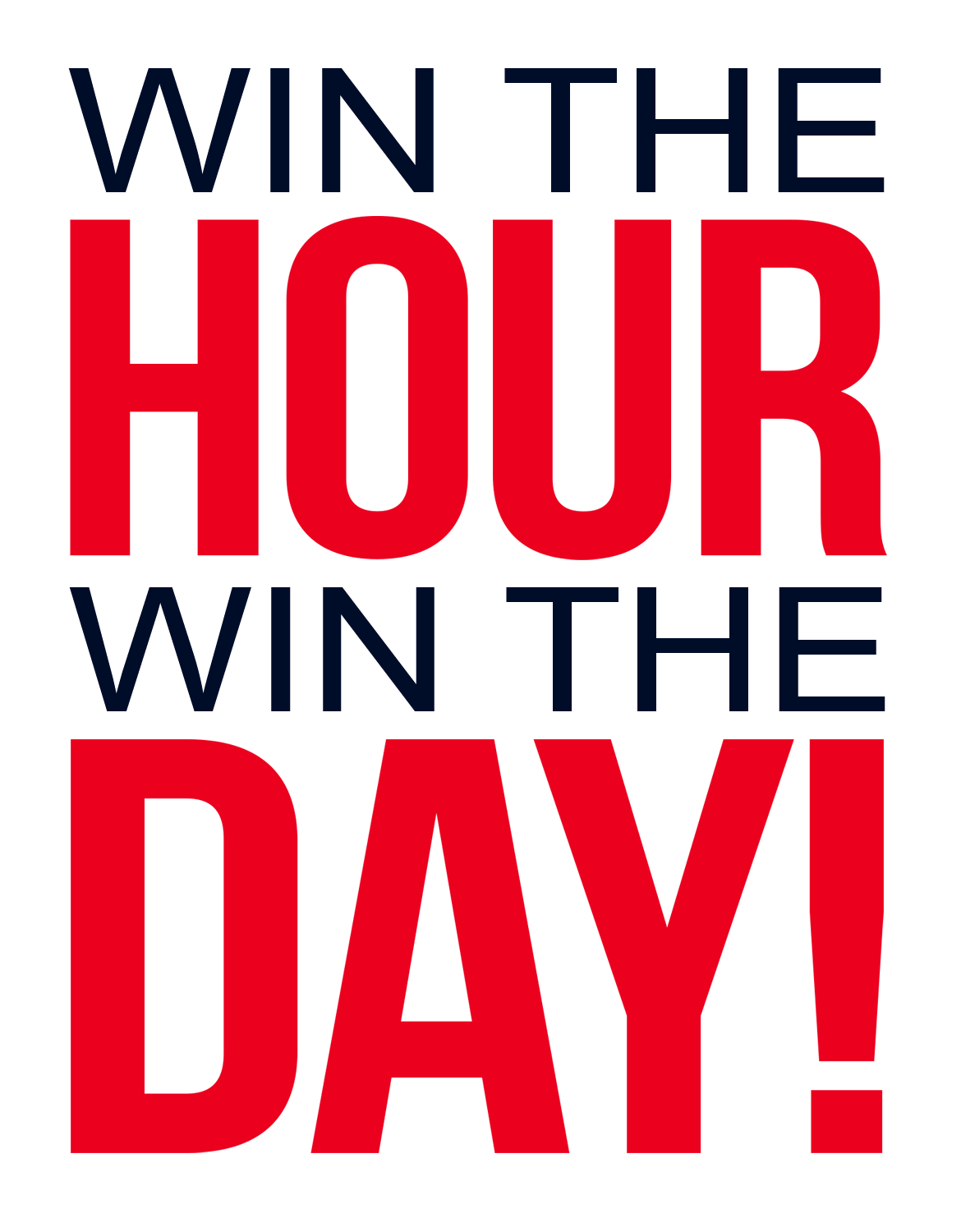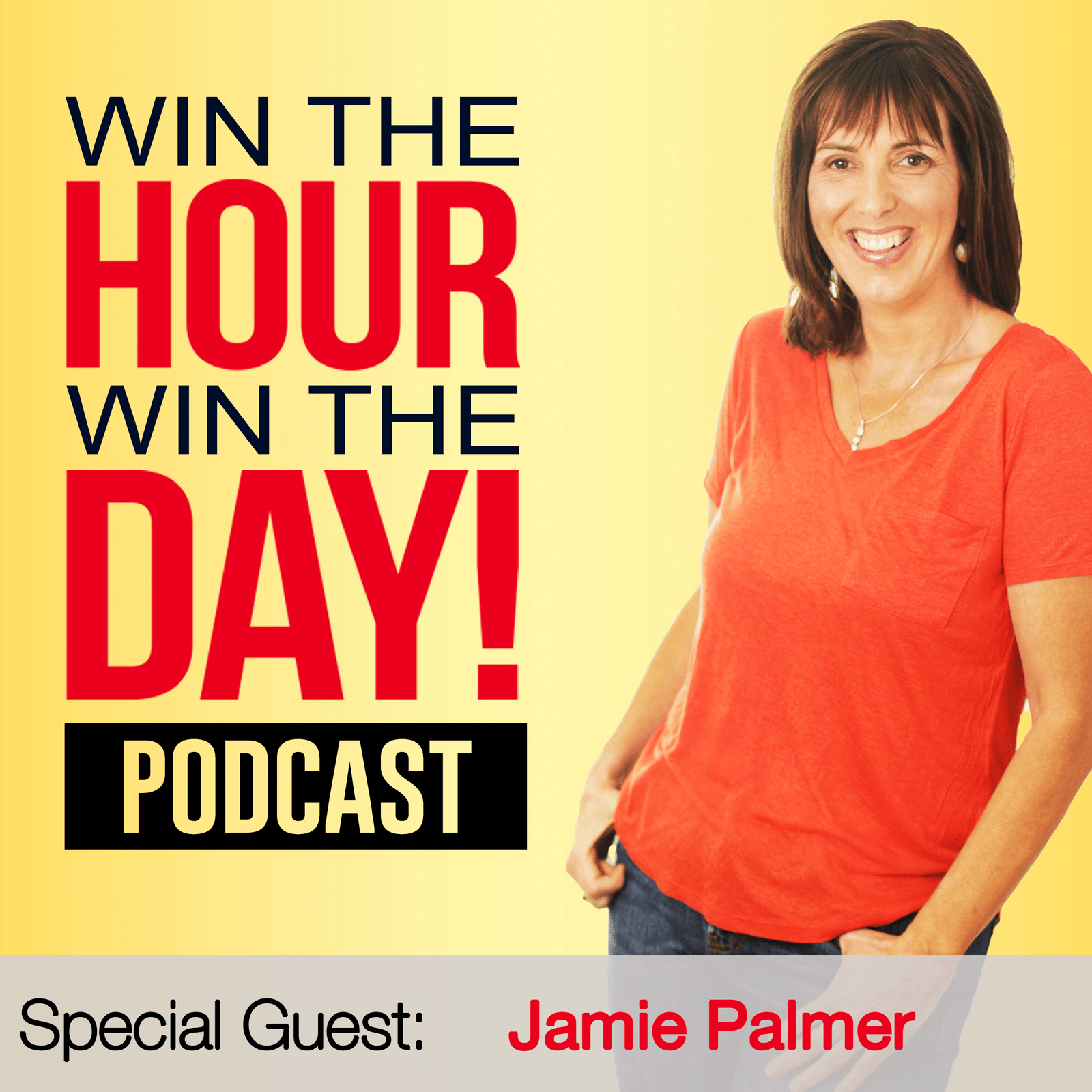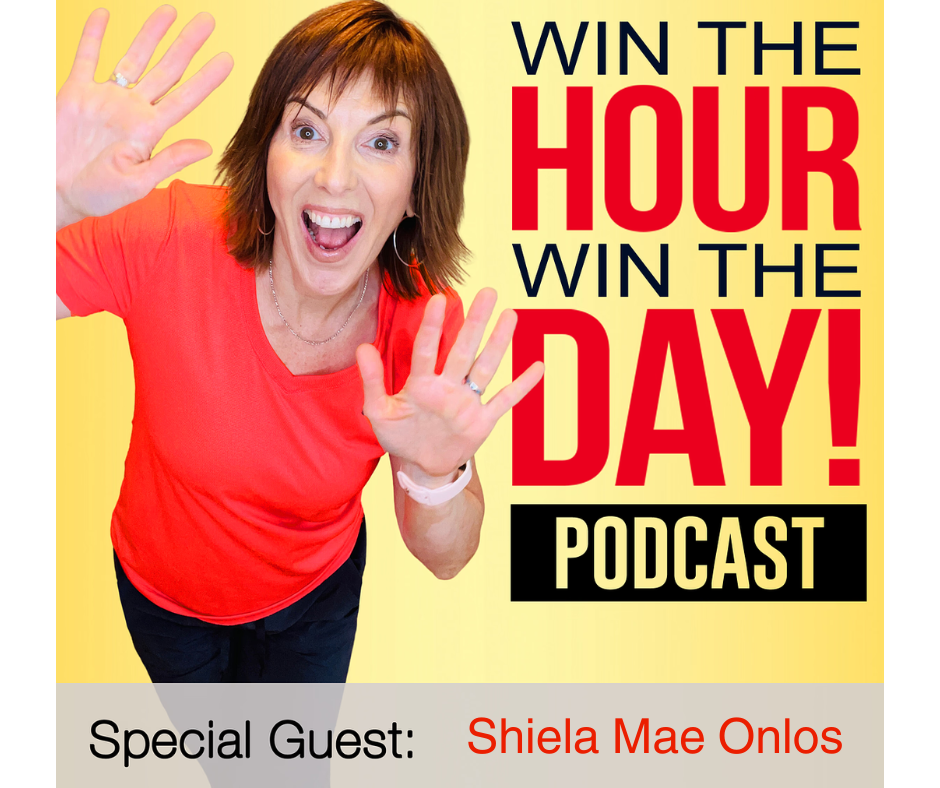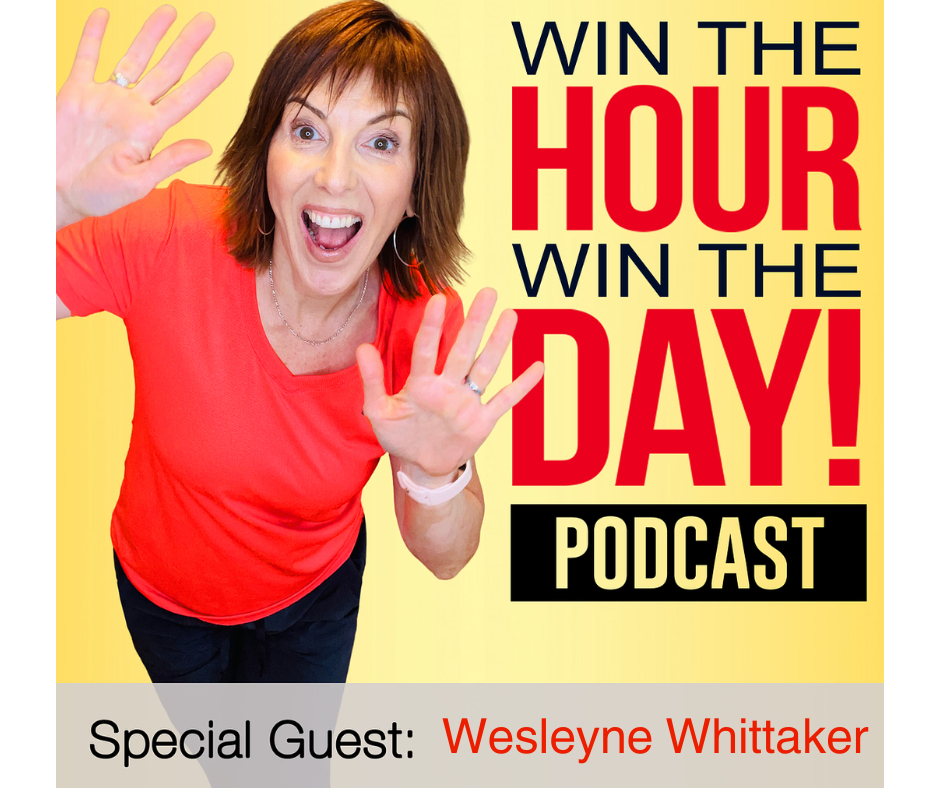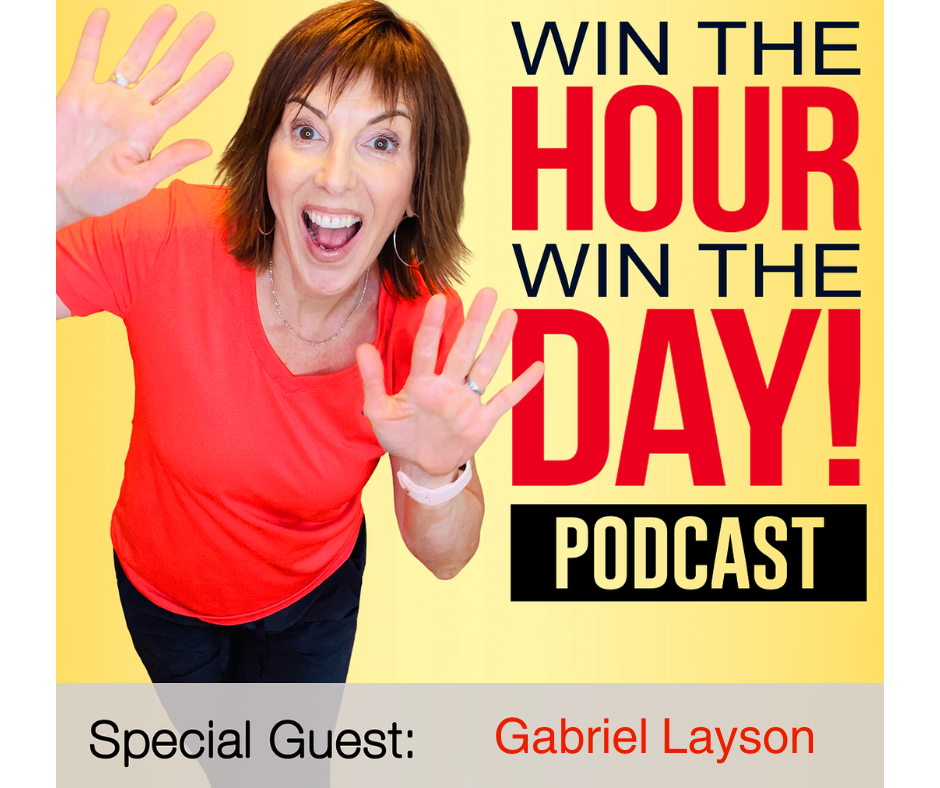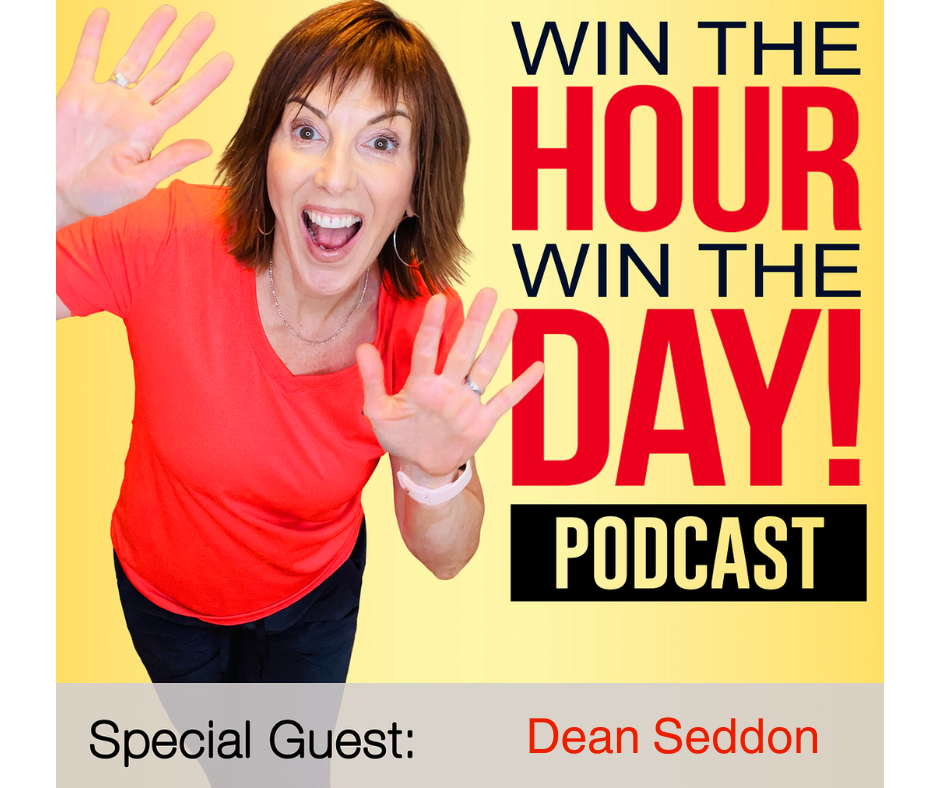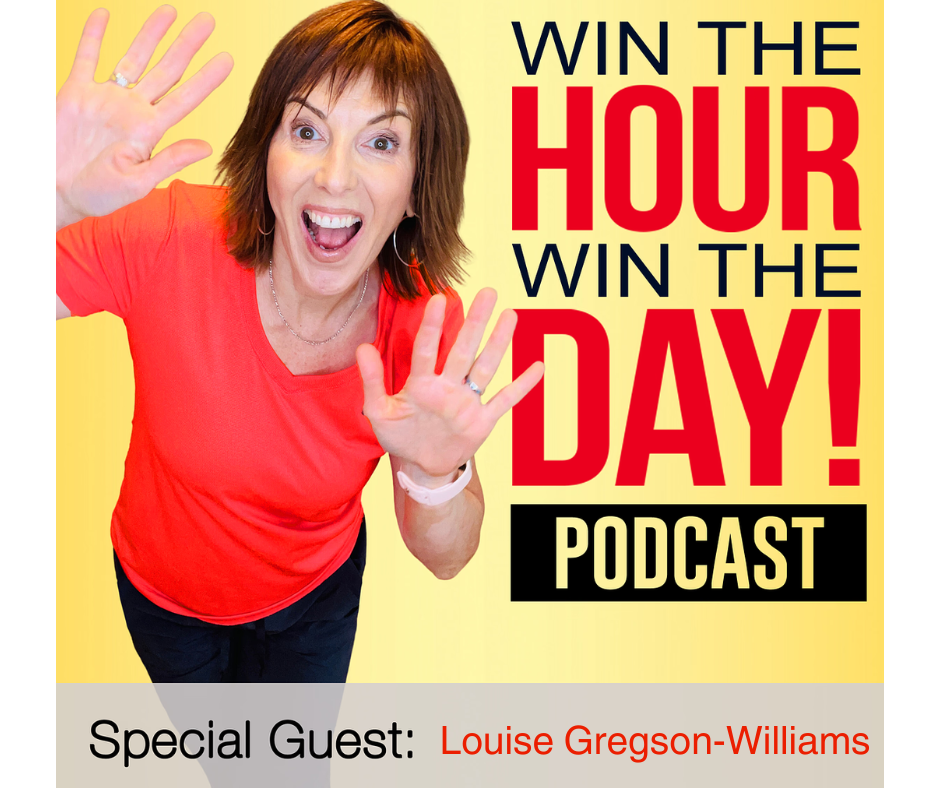Episode Summary
Jamie Palmer breaks down social media in such a way that you’ll be inspired. It’s simple but powerful!
Learn how to:
-easily repurpose your content!
-create powerful content quickly!
-how to stay relevant with Google!
Join The Community: https://www.facebook.com/groups/WinTheHourWinTheDay/
Win The Hour, Win The Day! www.winthehourwintheday.com
Podcast: Win The Hour, Win The Day Podcast
Facebook: https://www.facebook.com/winthehourwintheday/
LinkedIn: https://www.linkedin.com/company/win-the-hour-win-the-day-podcast
You can find Jamie Palmer at:
Website: outliermarketinggroup.com
Facebook: https://www.facebook.com/jamiepalmerbusinessstrategist
Email: jp@jamielpalmer.com
LinkedIn: https://www.linkedin.com/in/jamiepalmer/
Masterclass: Working Hard Sucks And It’s Costing You Money!
https://winthehourwintheday.com/working-hard-sucks-and-its-costing-you-money-masterclass
Win The Hour Win The Day
https://winthehourwintheday.com
Check out the Outsourcing Playbook For Busy Entrepreneurs here: https://winthehourwintheday.com/outsourcing-playbook
Jamie Palmer Podcast Transcription
START…
Kris Ward: Hey, everyone. Welcome to another episode of Win the Hour, Win the Day Podcast and I am your host, Kris Ward, and I am super excited about Jamie Palmer. She is in the house and now Jamie is going to dive in with us and she’s going to talk to us about how to make social media simple and how to really finally have a formula to repurpose your content and really do it in a way that it’s not just all this, you know, you can take something and repurpose it, but to really, really finally do one piece of something or item or content, and really make it effective for you.
Am I correct? Jamie? Is that what you’re promising us?
]Jamie Palmer: That’s what we’re going to attempt to do today.
Kris Ward: Okay. So I think I repurpose my content more than most, so we’ll take a video and then it gets transcribed and we turn it into posts with some tweaking and stuff. But I think from the little bit of conversation I had with you, I think I’m still missing the boat. I think there’s a lot more deep diving I could be doing.
]Jamie Palmer: Yeah, for sure. I think a lot of the repurposing formulas out there sort of miss the boat in that. You really have to slow down and get really intentional, especially if you have someone that can help you. Right. Most of the entrepreneurs I work with, they have some sort of assistant that helps them. Right.
[00:05:22]Kris Ward: We’re all about teams here, you know you probably have your ‘what is next team’ and, you know, otherwise you’re just a sufferpreneur and it’s a long slippery, painful journey. So yes, we do want to have someone to assist you with this, for sure.
[00:05:35]Jamie Palmer:Yeah. So, and for me, I’m always a big fan of, it’s just somebody that’s like a solo person.
[00:05:40] Stick on two platforms. However, if you’re starting to dive into this repurposing and I like to think of it from macro content. So macro content is content. That’s going to give you a longer life span. It’s lifespan might be days, weeks, months, even years, right? Depending upon the platform that you’re putting it on.
[00:06:00] And then you have this micro content and micro content is essentially content that you post on social media that promotes that macro content. And then we’ve got nano content. So nano content is the content that just lives on the social media platform.
[00:06:18]Kris Ward: Okay. So you’re going to give us examples of all of these.
[00:06:20]Jamie Palmer: Yes. So I’ll give you examples. I just want to set that framework, right? Forgot everything that we’re talking about. Macro micro nano. So macro content is really amazing because it’s got a really long life span. And I think far too often, people focus on that nano content. So, a good example of nano content is like a foot card with, you know, a nice long form meaningful caption.
[00:06:45] That content is great. However, when you post that on, say Instagram, for example, after a day or two, you’re probably not going to continue to get likes on it. Right. So if you then spend more time in say, taking your podcast and turning it into a blog and SEO-ing that on your blog and then repurposing it on medium and repurposing it on LinkedIn articles and repurposing it in all these places where you can leverage the SEO aspect of it. You’re going to continue to be able to reap the rewards of that content that you created.
[00:07:33]Kris Ward: Okay. I’m a little scared. That sounds like the macro. So we’re at macro. That sounds like a lot of work. So, and I, so if I have this podcast and then I have it transcribed, I turn it into a blog now for me, this is probably a side step.
[00:07:46] It’s because everybody else is doing it differently. For me, this podcast is general business and could be anything. I just want to get people to the next W.I.N now, but my major platform is all about creating the W.I.N Team and efficiency and all that other stuff. So for me it may not be a great fit unless I somehow tie into look in order to do all this amazing stuff.
[00:08:06] Jamie says, we should be doing this, you do need to have a W.I.N. Team. You can’t do this without it, so I can tie that into it. So then I would take this podcast, repurpose it into an article and then repurpose the article into my blog and to medium and into different platforms. Okay. All right. So it’s actually really not.
[00:08:27] I think once we start thinking about a bigger blog, you start to think you’re writing, but I’m not writing. I’m just tweaking this transcription, which I have to admit. We used to do that for a while. We were doing it with articles on LinkedIn. We would repurpose the podcast and do it on LinkedIn. And, yeah, I don’t have a good reason why we stopped that, but anyhow.
[00:08:44]Jamie Palmer: So I just recorded my 400 podcast episode and I do well.
[00:08:50]Kris Ward: She’s bragging. That’s all, she’s just bragging.
[00:08:54]Jamie Palmer: I’m not, I’m not. The reason why I share that though, is we’ve gone through periods of testing, like where we only did the short form description on my blog. And then I went through periods where we probably did a hundred episodes where we did the long form, all the SEO, the beautiful article and everything that we properly SEO
[00:09:16] and everything that we’ve done as a true blog, blog with the podcast embedded at the top of it. Still reaps certain benefits from WordPress. And it’s not really that much extra work in the grand scheme of things. And I consistently get 150 new organic subscribers off of Google every single month because I invested that time upfront and I’ve already created the art, the content, right.
[00:09:50] Number one. Number two, I don’t have to do the work of writing the article. My team handles that. And number three, that hour of time. And I have podcasts that are three years old that are still bringing subscribers to my list.
[00:10:06]Kris Ward: Okay. So let’s break this down the content, so when we repurpose this podcast, then do we do it Q and A magazine style? Like just a transcription of it. Fancy not summarizing it, make it a whole new story?
[00:10:19]Jamie Palmer: Correct.
[00:10:20]Kris Ward: Okay. So it’s like, here’s the intro. And then Kris said, and then Jamie said, and we went back and forth. So we just cleaned it up. And then we have an opt-in. And then we’re just posting it on our blog and it’s a full thing.
[00:10:35] Now, when we have this full transcription, do we put that in the show notes? Are you still putting that in the show notes on iTunes and other places, or we’re just pure talking content on socials.
[00:10:45]Jamie Palmer: I’m just talking pure content on the ‘socials’.
[00:10:47]Kris Ward: Okay. Okay. All right. So what you’ve done is you’ve taken this, we write it out very soon.
[00:10:53] We’re just cleaning it up. We’re not even, we’re not even writing an article, so we’re not writing an article off. Here’s the summary of what Jamie said. It’s just literally what Jamie said. And then we just repurposed that. Okay. We were doing that. I don’t know why we fell off the wagon with that. Okay.
[00:11:06]Jamie Palmer: Yeah. And I just want to add, Kris too, like you you’re gonna want to like sprinkling in keywords. Right. But it’s no different than when you’re cleaning, really cleaning it up. Right. So, be very smart about it when you’re recording it, you really don’t have to worry about adding keywords later on. But you want to make sure that you go through and you say, okay, I’m going to make this a headache.
[00:11:32] I’m going to add this as a subhead. Like when you go to physically post it, you want to make sure that you’re doing the thing that Google likes from a blog perspective.
[00:11:43]Kris Ward: Which is fine. Cause then you just go back and add it’s a cooking hat if you like spices, right? Yeah. Okay. All right. So we’ve got that. Now, for those I’m getting all excited.
[00:11:51] It’s all about Kris, but if you didn’t have a podcast, then you know, it could be a video that you’re repurposing. It could be anything that you’re doing on the ‘socials’, correct?
[00:12:01]Jamie Palmer:Correct. Yeah. So, we’ve done this for clients and for myself with Facebook lives. We’ve done that with clubhouses, where they just record the audio while they’re on the clubhouse.
[00:12:15] We’ve done it with YouTube. We’ve done it with LinkedIn lives. We’ve done it with just like, Hey, let me just record something on my phone, on my audio app. And we’re just going to use that as a transcription. Like we don’t even publish the audio anywhere. We just use the audio as the basis for the article.
[00:12:36]Kris Ward: Okay. Okay. So if I did it, I never thought of that. I’m a gosh. And here, I think I’m like, I think I got this, but I don’t. So, okay. So if we do the lives, then we just totally transcribe it again and we’re not tur. I wonder what will happen? I think we’re so many of us get stuck and say, oh no, that starts selling work is I’m thinking, taking the transcription and then turning it into an essay, like a blog, but we can just have a full-on transcription.
[00:13:00] And then just as long as we lay it out, like it’s a transcription back to that. Other previous one, like a magazine article, you speak I speak then that’s somewhere else that we post on medium and our blog and all those other places?
[00:13:13]Jamie Palmer: Yeah. And the other thing is too, if you’re not doing it as an interview, right.
[00:13:17] And I use this formula that I called the rule of three and the rule of three, basically states that if you’re going to do any sort of value driven podcasts or Facebook live or whatever, here’s the content, essentially you have three high-level bullet points. And then each one of those bullet points has three sub-bullet points.
And then therefore, when you go to get it transcribed, here’s your article format.
[00:13:43]Kris Ward: Oh, okay. Okay. All right. All righty. Oh, okay. I’m lost in thought you just talked to the people because I’m over here thinking about viewing. Okay. So,all right, so that’s, this is, we’re still at the macro level, right? Okay. So, the macro level, there’s all kinds of stuff you could be doing.
[00:14:04] You can do your podcasts, you can do your lives, you can do any video. Anything that you’ve done, turn that into from that, is that where we get our micro stuff?
[00:14:12]Jamie Palmer: Yeah. So once you have the macro, like I said, I highly recommend taking that macro and, and putting it wherever you can put that macro. Right.
[00:14:19] It’s worth it. Time and effort that takes. You also want to make sure that you are driving traffic to said macro from your social media. And that’s a step that people often skip. So from a micro perspective, what I highly recommend is that for every piece of macro content, you’re going to make two pieces of micro content and micro content is essentially content that gives you a teaser of the information that is shared or ready inside of that piece of macro content.
[00:14:54] And then it drives traffic back to that piece of macro content, whether that’s on your blog or your medium or wherever that is, you want to drive traffic there. If you are at all doing a blog on your own website, always drive the traffic back there first. But it’s really important because sometimes we’re like, oh yeah, here, let me link this podcast.
[00:15:18] And then you link the podcast app, right. Or you link the podcast and you fail to link the blog. And ultimately that doesn’t say to Google, ‘Hey, this content is relevant.’
[00:15:32]Kris Ward: So what you’re saying is we added habit, I would say, okay, this is really great conversation with Jamie and here’s the link to iTunes, but I’m driving traffic to iTunes, which is great.
[00:15:40] I want you guys to listen to me, but the reality is people aren’t going, stopping what they’re doing on their computer to go listen to the podcast. Anyhow. So it’s really making you aware of a podcast, but what I want to do is link it to my blog. Where the content is. And then they’re on that one. I have the written content. And do I put a link to the show there? Would I have the light?
[00:16:00]Jamie Palmer: Yeah. So what I like to do is I put like the little and I use Libsyn for my podcast. So we use the little embed form and then underneath we have subscribed buttons for all the different podcast platforms. And then underneath that is the full blown.
[00:16:15] Written articles and everything that I like to promote, because if you’re going to create this content, you want to promote it. So at that micro level, we always drive everything back to the blog and then people can sort of, self-select like, you can sit here and you can listen to it on the blog. You can read it, or you can listen to it at one of your favorite browsing places.
[00:16:34]Kris Ward: And you would drive traffic from the socials to that. Okay, perfect. Okay. And sorry, where are we now? Is that a micro?
[00:16:42]Jamie Palmer: That’s micro. So a great example of that is when you share this interview, right? You’re going to tag me on social media and I’m going to share it with my people. Right. But some of my people might be Google people.
[00:16:54] They might be iTunes people. They might be Spotify people. So if you drive it back to the blog where they have multiple listening options, it actually makes a better user experience as well.
[00:17:07]Kris Ward: So then we really should never be giving the link directly to iTunes? Oh, all right. Everybody had their moment for Kris because you know, you get caught up.
[00:17:19] I mean I’m a marketing strategist and I still have marketing clients, although everyone sees what we do with it. What I’m so passionate about is that you, you should, you know, your business should support your life, not consume it and you stop working so hard. That’s my governing thing. How I want to change the world.
[00:17:34] But you just get caught up in there’s so many little, teeny little steps that I always say it’s like getting directions to somewhere and you’ve all these directions. All you have to do is take one little wrong road and you’re off like, woo. So you get seduced in the beginning when you’re all excited.
[00:17:50] Look Mom. I have got, I’ve got a podcast, which by the way, sidebar story, my mother will often say things like, and she’s very tech savvy, very smart, very witty, very young, all this other stuff, but like prince Harry and Meghan Markle now have a podcast. She goes, yeah, they’re doing that thing that you’re doing.
[00:18:05] What is that? The podcast I’m like, okay, see, they’re not actually, she makes it seem like they’re trying to catch up with me. Right. I’m like, thanks mom. But I’m not that I’m not ahead of them in any capacity. Like, they’re not trying to catch up to me, but you do get to do some, oh, look, I’m on iTunes. So let’s drive the traffic to iTunes because I feel like a big girl. I’m connected to iTunes, but you’re right. That’s just bad math.
[00:18:31]Jamie Palmer: Well, and you can’t also see the analytics. I always run it. The lens of, I always prefer to keep it in my ecosystem. I mean, in fairness, my whole philosophy is like, let me build my own business online business ecosystem, but it’s like the more that you can keep traffic within your ecosystem, the easier it is to get people to move forward.
[00:18:58]Kris Ward: Yeah, absolutely. Oh my gosh. Okay. So then what does nano look like?
[00:19:05]Jamie Palmer: Yeah. Nano content is essentially all those social media posts that you do. So via social media posts, that’s just meant to drive engagement or commenting or getting likes. And I always say for every piece of macro content, you should be able to create four to five pieces of nano content that you’d sprinkle out.
[00:19:28] You know, one a week over the next. Three to four weeks. So, my formula for that is you usually grab one to two quotes. Okay. And with those quotes, you put an affirmation or some sort of short form question or just something to drive a little bit of engagement right there on the social media platform.
[00:19:49] And then you’d have one to two short-form posts, right. Where it’s like, here’s the sort of like a ninja tip or a fast action tip that they can drive. That’s just, it’s right there on the platform. They don’t have to go anywhere. Right. You’re meeting them where they are. And then you typically would grab one longer form piece of content that you’d pull as a nano that lives on. On the social media platforms.
[00:20:19]Kris Ward: Yeah. And simple things like you said, I mean, we certainly do that with the podcast. We’ll get a quote from the audience. We do the audience, sorry, the guest, and we do a graphic on it. So, and even that was when somebody told me that idea, I was like, oh, you know, that’s a simple, how either they’re really smarter.
[00:20:35] I’m really stupid. Why did I not think of that sooner? Right. So sometimes there’s just little teeny things that you just. You know, it kind of reminds me, I don’t know where you live, but this egg commercials where they’ll show you that, oh, you can make eggs for breakfast, eggs for dinner, eggs, for lunch. And there are a whole lot of things you can do with an egg.
[00:20:52] And that’s really what’s happening is you just get lost in the busy-ness or the grind of social media. And you forget to be more creative with it.
[00:21:01]Jamie Palmer: 100%, 100%.
[00:21:04]Kris Ward: All right. So tell us some of the other big mistakes you think you see all the time where people are missing out.
[00:21:08]Jamie Palmer: Tagging. Oh my goodness. I feel like everybody always forgets to tag or they tag in properly.
[00:21:16] Simply because I think that they, you know, when you think about tagging on Instagram versus Facebook, right, you want to tag on Instagram in both the image and in the description or the couch, if you will. Because when you tag on the image, it shows up on my profile. Okay. And when you tag in the caption, it makes it easier for me to share it.
[00:21:40] So I always am a fan of doing both. I also see a lot of times that people will share directly from Instagram to Facebook, and then it doesn’t translate well. Or it’s got all the Instagram hashtags on there that makes me crazy. Spend the five minutes. Post it natively on the platform. But I think that’s a big one that a lot of people make.
[00:22:04] And I think it’s just these simple little nuances on all of these platforms that when you feed them in the right way, they’ll work really well for you. But if you’re trying to shortcut it, like Facebook knows that.
[00:22:22]Kris Ward: Yeah, yeah, yeah. We’re not, yeah. We’re not, we’re not going to outsmart them. That is for sure. What do you think about it? So I don’t know if I’m a bad human being. Because I don’t really like it when someone tags me on LinkedIn. And it’s just a general question. They’ve tagged, like, twenty-five people it’s like, well, what do you think of this? Like, do you think you should work evenings and weekends, and then you get tagged in something.
[00:22:41] And my expectation, if I’m tagged in it, it’s like I was on it. We connect like it’s really about me. So I’m starting to see that a lot on LinkedIn and Instagram. And I don’t know, I’m just, I’m not that evolved because I find it. It’s like, you’re tapping me on the shoulder and saying, Kris, I have a question. And then I look, and you’re not, I’m in a room with a hundred other people.
[00:23:01]Jamie Palmer: Yeah. I mean, I have a love-hate relationship with LinkedIn. I originally started my business when I was 20 and LinkedIn was the primary way I grew my business for a solid decade and I feel like it has just become a spam Fest over there. So I am not a fan of random tagging.
[00:23:20]Kris Ward: They do it on Instagram too. I saw it on Instagram where I got tagged. Like, yeah.
[00:23:24]Jamie Palmer: I haven’t seen it on Instagram yet, but I think it’s tacky. Like you shouldn’t be tagging someone unless you’re sharing something of theirs or you’re actually there, it’s relevant to them.
[00:23:37] Like they’re involved in that. Like you shouldn’t just randomly tag people unless it’s like, Hey, you know, tag a girl boss. Like, not that I am a fan of that, but like, that’s how, you know, one way in which you can use tagging.
[00:23:53]Kris Ward: But don’t tag me to get an audience. Like that’s what they’re doing.
[00:23:54] They’re tagging people. So all of a sudden they have an audience and it does turn me off. I just think, oh, it takes everything I have not to onconnect with them. I think in the real world, you should have that ‘delete on friend’. Button. I’m just like big. I really enjoy it. I’m just like, oh, you were kind of rude at Thanksgiving.
[00:24:12] Oh, here we go. We’re disconnected. Yeah. Okay. So, all right. So make sure we’re really taking our content, repurposing it, breaking it down to the whole macro, micro, nano. Right. And then I don’t even know, like what, where do you start with, like, I know I produce my content. I have a client on Fridays. I do content.
[00:24:35] Where do we, how do we keep track of this all, if you say, okay, do we pick podcasts over live, or just keep repurposing everything. And don’t worry about having too much content. Really?
[00:24:46]Jamie Palmer: I don’t worry about having too much content. Yeah. I just don’t worry about it. And then I also am like a huge fan of like, once a week, referring back to old content as well, you know, in my social media schedule, like we try to do two posts a day.
[00:25:03] And at least once, if not twice a week, we’re referring back to old content, right? Whether that’s an old YouTube or whether that’s an old podcast or whatever that might be. And we’re just trying to drive traffic to it because ultimately I want to tell Google, like, ‘Hey, I’m relevant.’
[00:25:23]Kris Ward: Right. That’s an important thing that I think we forget because we all are like little dancing monkeys on different social media platforms. And you’re like, okay, tap, tap, tap. Literally. Cause literally dancing monkeys. Cause I’m telling you I’m not dancing and ticked off. I don’t care what happens to the world.
[00:25:37] Right. I’m just, and I’m not doing that. When you guys, you can turn it on YouTube to see me bounce around, but I’m not doing that bouncing around and then pointing shockingly at the sky where there’s a caption and then point down, it’s been done. All right. So I’m not sending you up to be the 1000 person to have done that.
[00:25:53] So you become this dancing monkey, and then you forget this isn’t really just about getting likes and connections. This is really about educating Google. On who you were, where you are and what you’re good for really.
[00:26:05]Jamie Palmer: Ultimately everything you do on social media, I think of it like each individual social media platform is its own ecosystem.
[00:26:12] And I am a huge fan. I’d rather have people own and really do two social media platforms really well then beyond three or four or five. And ultimately when you think about how can I leverage this? The whole point of social media is simply to get people to go back to your website, right? Like it’s, it has nothing to do with a like, or a comment there.
[00:26:32] And it often gets lost along the way. Like the social media doesn’t matter if you have an engaged following and you get, you know, 20 or 30% of your people who are actually clicking through to your website and signing up for your email where that’s something that you own or you lease. Right. That’s way better than having 20,000 followers who just like your video or whatever it is, you know?
[00:26:58]Kris Ward: A hundred percent. Oh my gosh. Okay. Jamie, we’ve got a couple of minutes left. What’s the last thing we need to know from you. And not the last thing, what’s one of the other things. And where can people find more of your brilliance?
[00:27:13]Jamie Palmer: Yeah. So, I would say consistency. I think that would, that’s what I would leave
[00:27:19] you guys, consistency is important. Don’t try to do it every day. If that doesn’t feel in alignment to you, just try to show up consistently whether that’s three times a week or seven times a week or whatever that is. Just be consistent. And then you can find me on social media as Jamie Palmer.
[00:27:35]Kris Ward: Yeah. And that consistency really is something, because I know once you get that down path, then you can take a deeper dive because then it is like, you know, crawling out of a pile of paperwork saying I got to do this today on Facebook. So if you get the consistency down path, okay, that’s done. We’ve got a routine.
[00:27:51] Boom. What, how can we do this more effectively next week? So I think you’re abs.. of course, you’re right. I love when people are on my show and they’re very wise and I see, yeah, yeah, you’re right. Like they came here for me to tell them they’re right. But I mean it with affection, not, you know, yes. You’ve been ordained here.
[00:28:07] Right? Jamie you’ve been spectacular. Thank you so very much. She’s a very valuable tip and, we appreciate you and everyone else, we’ll see you on the next episode. [00:28:16]
END…
